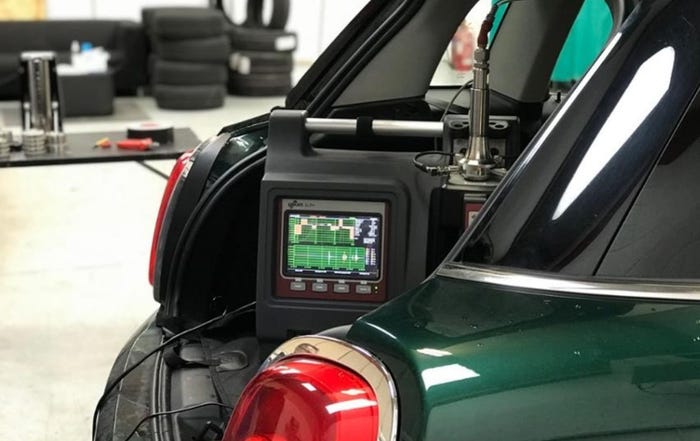Nissan to Build 14-Day Car in Two Years
Nissan Motor Co. Ltd. expects to produce the 14-day car in Japan within two years and hit that bogey in the U.S. shortly after, says Hisayoshi Kojima, executive vice president-Manufacturing. The shorter build-to-order time is one of the benefits the Japanese automaker hopes to achieve through its manufacturing strategy, dubbed the Nissan Production Way (NPW), and incorporation of what Nissan calls
August 6, 2001

Nissan Motor Co. Ltd. expects to produce the 14-day car in Japan within two years and hit that bogey in the U.S. shortly after, says Hisayoshi Kojima, executive vice president-Manufacturing.
The shorter build-to-order time is one of the benefits the Japanese automaker hopes to achieve through its manufacturing strategy, dubbed the Nissan Production Way (NPW), and incorporation of what Nissan calls Douki-Seisan (Japanese for sequence and simultaneous) activities designed to fix-sequence production schedules based on daily orders from customers.
Key to NPW is flexible manufacturing capability. Introduction of flexible manufacturing in body assembly increased the automaker’s ability to build to schedule by 50%, and a 36% gain was seen in the paint process, Mr. Kojima tells conference attendees on Monday. Use of flexible tooling for component machining reduced powertrain manufacturing lead time in Japan from 4.4 days to 1.4 days, he says.
Nissan’s goal is to cut order-to-delivery times in metropolitan areas of Japan from 30 days to just two weeks. Mr. Kojima says Nissan is currently working with its suppliers to support OTD in Japan, and it is looking to trim post-production time out as well by consolidating pre-delivery inspection tasks now performed at both the assembly plant and dealership.
Efforts to shorten OTD are occurring concurrently in the U.S., where delivery times to dealers will be trimmed from about 40 days now, Mr. Kojima says. “It won’t happen as soon as in Japan, but it shouldn’t be too far behind,” he says. Nissan expects dealer orders to fill inventory will be reduced to about 10% to 20% of total production.
Cost savings are difficult to calculate, Mr. Kojima says, “but from the manufacturing side there are many benefits.”
NPW, used widely in Japan, will be fully implemented for the first time in the U.S. with the automaker’s new Canton, MS, truck plant, slated to come on stream in 2003 and be fully ramped up six months later. The Smyrna, TN, plant also follows the principles of NPW, but it lacks some of the modern tooling and equipment to benefit fully from the production system.
NPW also was used to create the Renault Production Way that partner Renault SA is using in Europe. Renault’s version is about 90% Nissan, Mr. Kajima says, with about 10% unique due to cultural differences.
Nissan also is moving toward modular production, although Mr. Kajima says the automaker hasn’t clearly defined its strategy. “It could be different in different markets,” he says. “It will be driven by supplier capability, workability, ergonomics and economics in different regions around the world.”
In Japan, Nissan is using front end, cockpit and suspension modules in building its Skyline passenger car. In the U.S., its new Mississippi-built fullsize trucks will use front end, wheel/tire and cockpit modules.
Meanwhile, Nissan expects its flexible manufacturing system, plus elimination of some stages of prototype development and shorter tooling times, to cut product development from 29 months to 19 months, design freeze to start of production.
Read more about:
2001About the Author
You May Also Like



